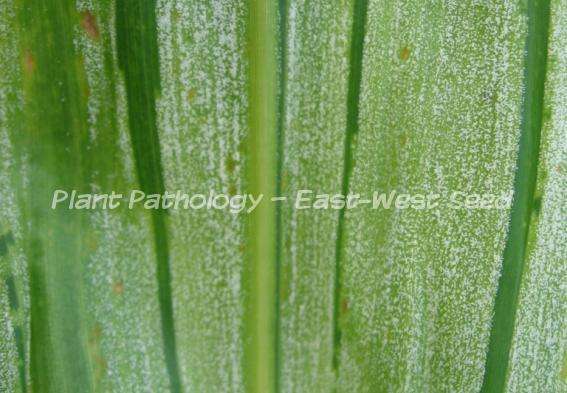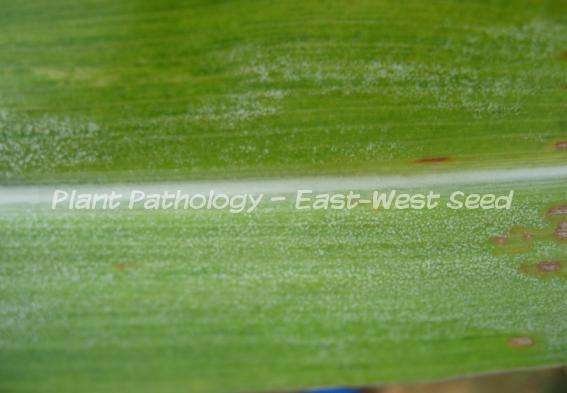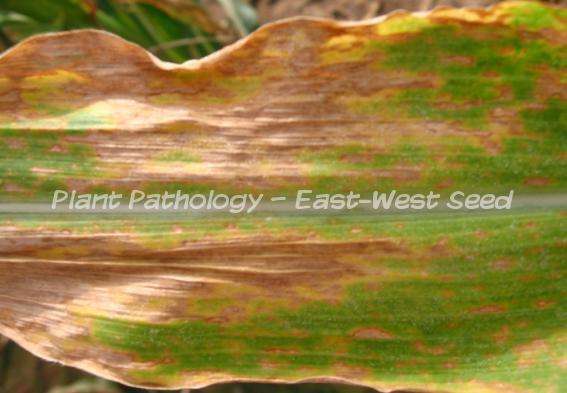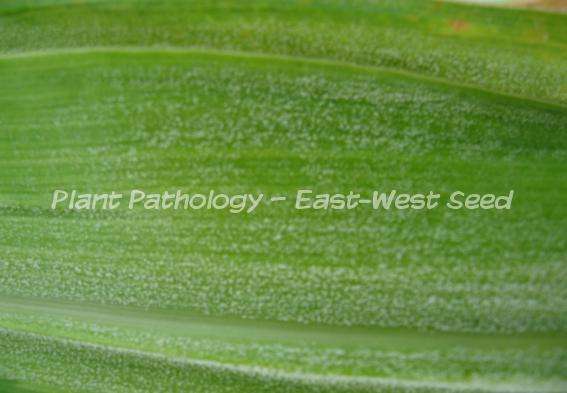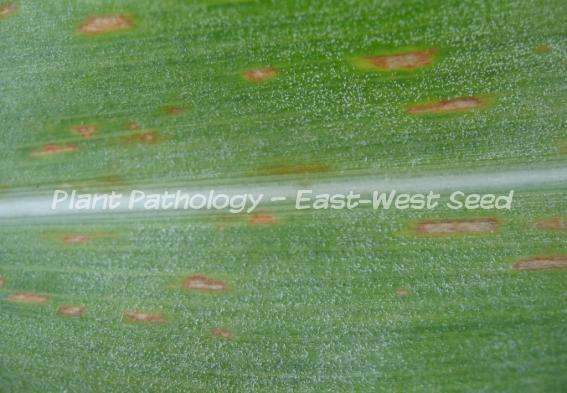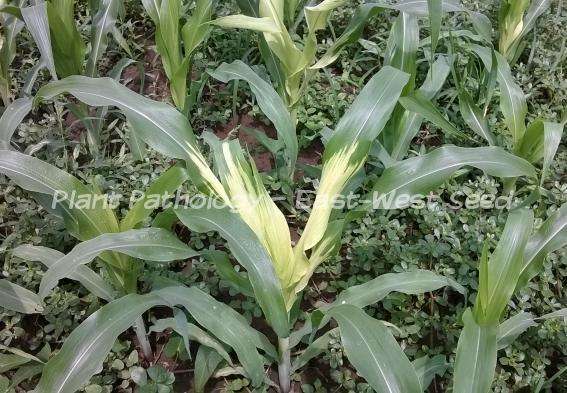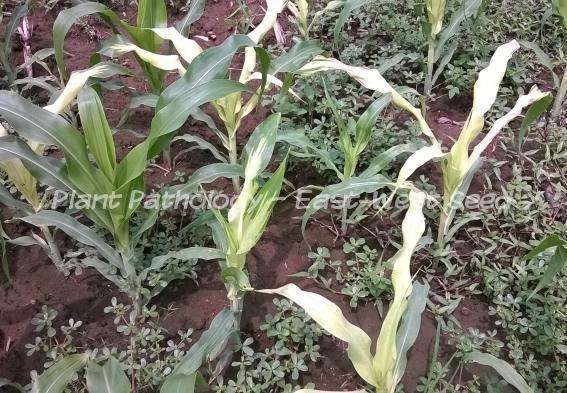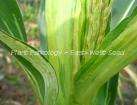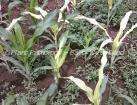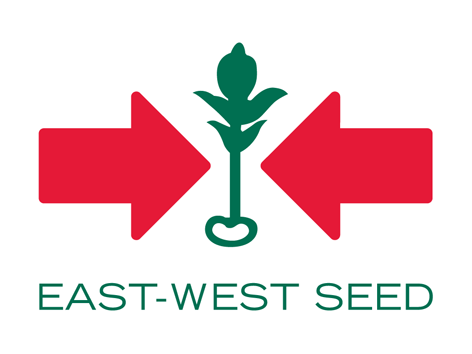Causal Agent:
Fungus (Peronosclerospora philippinensis)
| Characteristic Symptoms: | |
 |
Chlorotic stripes or overall yellowing on the first true leaves is the initial symptom of the disease. |
 |
Under favorable condition, white downy growth of conidia and conidophores on the upper and lower leaf surface will develop. |
 |
Tassels may be malformed and produce less pollen. |
 |
Downy mildew fungus can invade the stem as well as the shoot apex. |
| Conditions for Disease Development: | |
 |
The disease is most prevalent in warm and humid regions. |
 |
Downy mildew frequently occurs in areas of fields subject to flooding. |
 |
Seedlings are more susceptible than adult plants. |
 |
Spore production requires high humidity, with at least a thin film of water on the infected leaf surface. |
| Management and Control: | |
 |
Use resistant varieties, if available.
|
 |
Use fungicide-coated seeds. |
 |
Avoid areas prone to flooding. |
 |
Provide adequate drainage for surface water. |
 |
Maintain good field sanitation (e.g. remove and burn infected plants/plant parts as soon as initial symptoms are observed). |
 |
Spray with fungicides such as metalaxyl+mancozeb (e.g. Ridomil®), dimethomorph+mancozeb (e.g. Acrobat®), propineb (e.g. Antracol®) or maneb(e.g. Maneb®). |
References
https://www.pioneer.com/home/site/us/agronomy/crop-management/corn-insect-disease/downy-mildew/
The CIMMYT Maize Program. 2003. Maize Diseases: A Guide for Field Identification. 4th edition. Mexico, D.F.: International Maize and Wheat Improvement Center (CIMMYT).
To view other diseases, click here.
Need more help? Ask the Doctor.



